【询价/阅新品 + 右侧联系】
公路桥梁效果图制作案例:

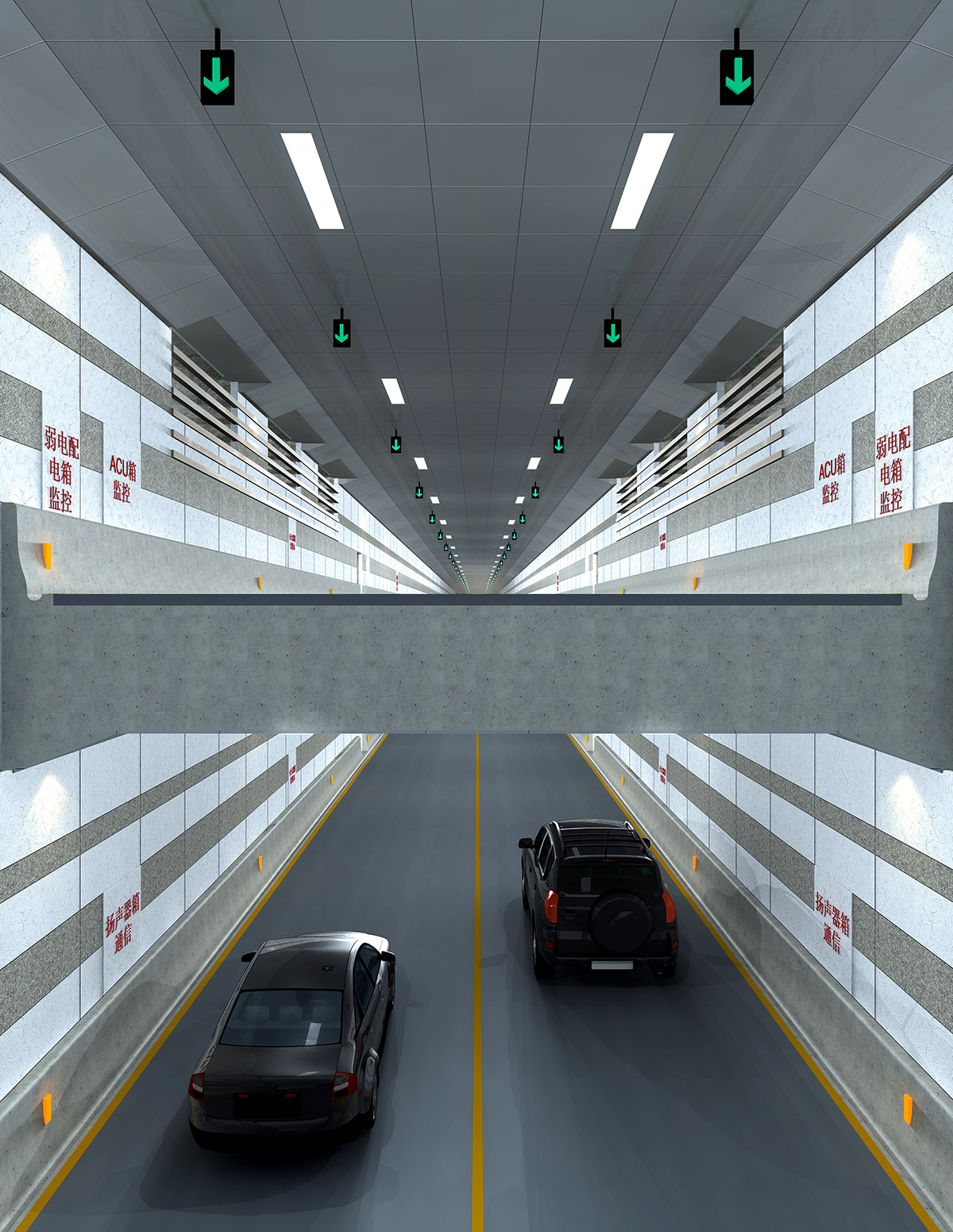


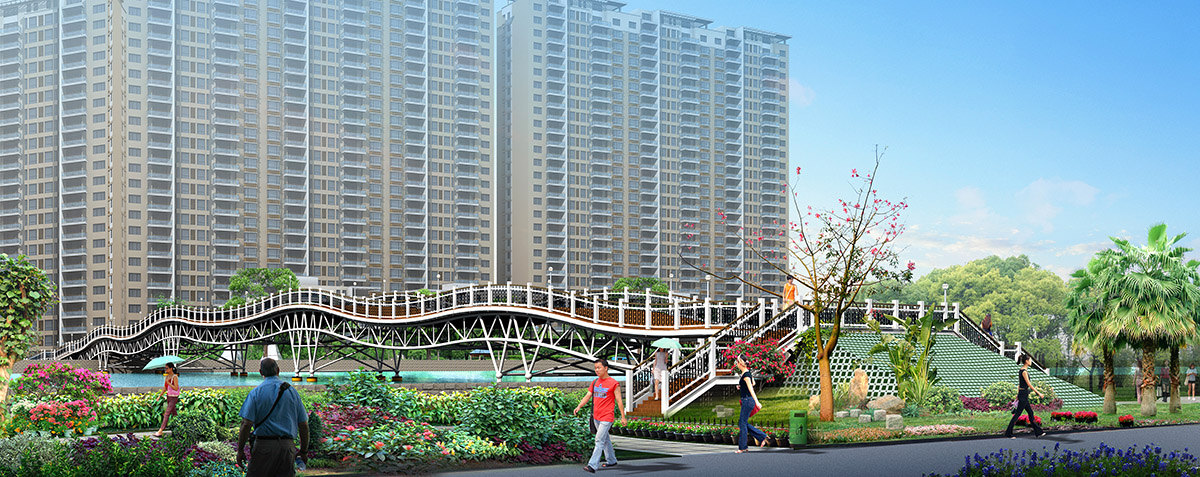
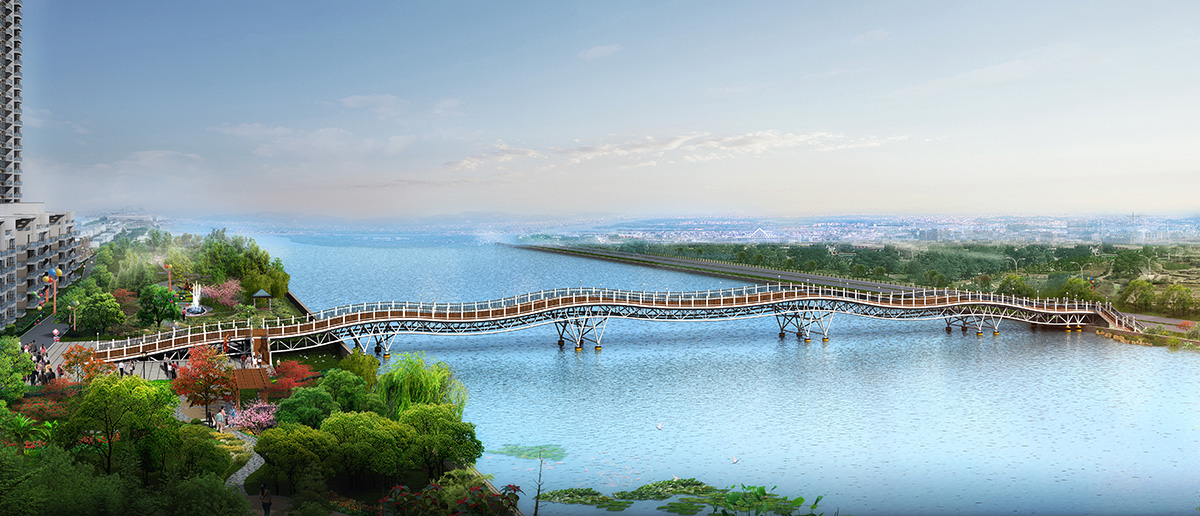
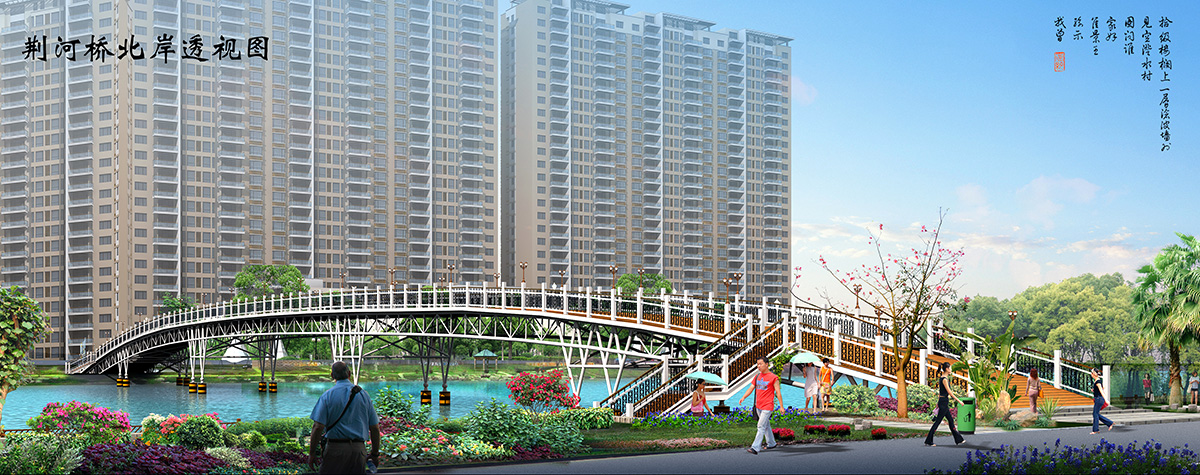

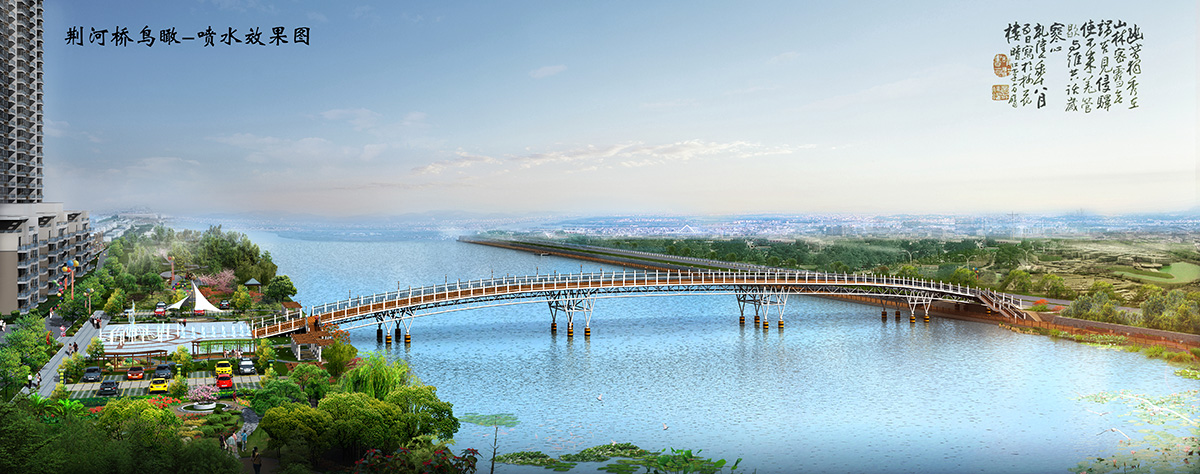


公路桥梁效果图制作在桥梁工程的规划、设计、施工以及宣传推广等多个环节都具有显著优点,以下为你详细介绍:
规划与设计阶段
直观展示设计方案
效果图能够将设计师脑海中的抽象概念以直观、形象的二维或三维图像呈现出来。例如,在规划一座跨江大桥时,效果图可以清晰地展示桥梁的总体布局、结构形式(如悬索桥、斜拉桥、拱桥等),让项目决策者、业主和相关利益方在早期阶段就对桥梁的外观和整体效果有清晰的认识,避免因理解差异导致设计方向的偏差。
优化设计方案
通过效果图,设计师可以更全面地审视设计细节,发现潜在的问题。比如,在观察桥梁的夜景效果图时,可能会发现照明布局不合理,导致部分区域过亮或过暗,从而及时调整照明方案;还能评估桥梁与周边环境的融合度,若发现桥梁色彩或风格与周围自然景观或城市建筑不协调,可及时修改设计,提升桥梁的整体品质。
辅助方案比选
在多个设计方案中,效果图可以提供直观的比较依据。例如,对于同一座桥梁的不同结构形式方案(如采用不同的桥墩形状或主梁截面形式),通过制作效果图,能够清晰地对比各方案在外观、空间利用等方面的差异,帮助决策者选择最优方案。
施工阶段
明确施工目标
施工团队可以根据效果图明确施工后的最终成果,准确理解设计意图。例如,在施工桥梁的装饰部分时,效果图可以展示装饰材料的颜色、纹理和布局,施工人员能够按照效果图的要求进行精确施工,确保施工质量符合设计标准。
协调施工过程
效果图有助于各施工专业之间的协调配合。在桥梁工程中,涉及结构、电气、给排水等多个专业,通过效果图,各专业人员可以提前了解彼此的工作内容和空间需求,避免施工过程中出现冲突。比如,电气专业人员可以根据效果图确定照明设备的安装位置,确保不与结构或其他专业设施发生干涉。
进行技术交底
效果图是技术交底的重要工具。设计师可以通过效果图向施工人员详细讲解设计要求和施工难点,使施工人员更好地理解设计意图,提高施工效率和质量。例如,在讲解桥梁的特殊结构节点时,结合效果图可以更清晰地展示节点的构造和施工顺序。
宣传推广阶段
吸引投资与合作
精美、逼真的公路桥梁效果图能够吸引潜在投资者的关注,展示项目的可行性和发展潜力。例如,在招商引资过程中,通过展示桥梁建成后的效果图,可以让投资者直观地了解项目对当地交通和经济发展的积极影响,增加他们对项目的信心,从而吸引更多的资金投入。
提升项目形象
效果图有助于塑造项目的良好形象,增强公众对项目的认同感和支持度。在项目公示或宣传活动中,展示桥梁效果图可以让公众提前感受到桥梁建成后带来的便利和美观,减少公众对项目建设的疑虑和反对情绪。例如,在城市桥梁建设项目中,通过效果图展示桥梁与周边城市景观的融合,能够提升城市的整体形象,获得市民的认可。
用于营销推广
对于一些旅游型或具有标志性的公路桥梁,效果图可以用于制作宣传海报、视频等营销资料,吸引游客前来参观。比如,一些造型独特的跨海大桥,通过效果图展示其壮观的景色和独特的设计,能够吸引大量游客,带动当地旅游业的发展。
制作公路桥梁效果图是一项综合性工作,需要掌握多种技能并借助专业工具来完成,以下为你详细介绍:
所需技能
美术与审美技能
色彩搭配:色彩是效果图视觉呈现的关键要素。要了解不同色彩所传达的情感和氛围,如暖色调给人热情、活力的感觉,冷色调则带来冷静、沉稳的印象。在公路桥梁效果图中,合理搭配色彩可以使桥梁与周边环境相协调,增强画面的美感。例如,在自然环境优美的山区桥梁效果图中,采用绿色、蓝色等冷色调为主,搭配少量暖色调作为点缀,能突出桥梁与自然的融合。
构图能力:良好的构图能够引导观众的视线,突出重点元素。常见的构图方法有三分法、对称构图、引导线构图等。在公路桥梁效果图中,可以运用引导线构图,将桥梁作为引导线,引导观众的视线从近处延伸到远方,增强画面的纵深感。
光影表现:光影可以营造出立体感和空间感,使效果图更加逼真。需要掌握不同光源(如自然光、人工光)的照射效果,以及物体在光线下的明暗变化。例如,在表现桥梁的夜景效果图时,合理设置路灯等人工光源,通过光影的对比突出桥梁的结构和层次。
专业技术技能
桥梁知识:熟悉公路桥梁的结构形式、构造特点和设计规范,了解不同类型的桥梁(如梁式桥、拱桥、斜拉桥、悬索桥等)的外观特征和受力原理。这样在制作效果图时,才能准确地表现桥梁的结构细节,避免出现专业错误。
软件操作:熟练掌握效果图制作相关软件的操作技巧,能够高效地完成建模、材质赋予、灯光设置和渲染输出等工作。
创意与想象力技能
创意设计:在满足桥梁功能需求的基础上,发挥创意,为桥梁设计独特的造型、装饰和景观配套,使效果图更具吸引力和创新性。例如,在桥梁的栏杆设计上融入当地的文化元素,打造具有特色的桥梁景观。
场景想象:能够根据桥梁的地理位置和周边环境,想象出桥梁建成后的实际场景,包括与自然景观、城市建筑的融合效果,以及不同季节、不同时间段的视觉变化。
所需工具
建模软件
3ds Max:功能强大的三维建模、动画和渲染软件,广泛应用于建筑、桥梁等效果图制作领域。它提供了丰富的建模工具和材质库,能够创建出逼真的桥梁模型。例如,使用3ds Max的多边形建模工具可以快速搭建桥梁的主体结构,再通过材质编辑器为模型赋予逼真的材质,如混凝土、钢材等。
Maya:专业的三维动画和建模软件,在影视特效和高端效果图制作中应用广泛。Maya具有强大的角色建模和动画功能,同时也能很好地完成桥梁等建筑模型的创建。其灵活的节点系统使得材质和灯光的设置更加精细,能够制作出高质量的桥梁效果图。
Rhino(犀牛):专注于曲面建模的软件,对于一些造型复杂的桥梁结构,如曲线桥、异形桥等,Rhino能够提供高效的建模解决方案。它可以将复杂的曲面设计准确地呈现出来,并且与其他软件(如3ds Max)有良好的兼容性,方便进行后续的效果处理。
渲染软件
V-Ray:一款高性能的渲染器,与3ds Max、Maya等主流建模软件兼容性良好。V-Ray能够模拟真实的光线效果和材质质感,渲染出高质量、逼真的桥梁效果图。它提供了丰富的渲染参数设置,可以根据不同的需求调整渲染质量和速度。
Corona Renderer:以简单易用和渲染速度快著称,同时也能保证渲染效果的品质。Corona Renderer的材质系统直观易懂,能够快速为桥梁模型赋予逼真的材质和光照效果,适合对渲染速度有较高要求的项目。
后期处理软件
Adobe Photoshop:强大的图像处理软件,用于对渲染输出的效果图进行后期处理。可以调整色彩、对比度、亮度等参数,优化画面的视觉效果;还可以添加配景元素,如树木、车辆、人物等,增强场景的真实感和氛围感。例如,通过Photoshop的蒙版和图层功能,可以将渲染好的桥梁主体与背景环境进行自然融合。
Adobe After Effects:主要用于制作动态效果图和视频。如果需要制作桥梁的动画展示,如桥梁的建设过程、不同视角的浏览等,After Effects可以提供丰富的动画特效和合成功能,将静态的效果图转化为生动有趣的动态视频。
其他辅助工具
AutoCAD:专业的二维绘图软件,在桥梁设计中用于绘制详细的施工图纸。在制作效果图时,可以从AutoCAD中导入桥梁的平面图、立面图等基础数据,作为建模的参考依据,确保建模的准确性。
SketchUp:操作简单、易于上手的三维建模软件,适合快速创建桥梁的初步模型。它具有丰富的插件资源,可以扩展软件的功能,如进行简单的渲染和动画制作。对于一些概念性的桥梁效果图制作,SketchUp是一个不错的选择。
The production of highway bridge renderings has significant advantages in various aspects of bridge engineering, such as planning, design, construction, and promotion. The following is a detailed introduction for you:
Planning and Design Phase
Intuitively display design solutions
Rendering can present abstract concepts in the designer's mind in intuitive and vivid two-dimensional or three-dimensional images. For example, when planning a cross river bridge, renderings can clearly display the overall layout and structural form of the bridge (such as suspension bridges, cable-stayed bridges, arch bridges, etc.), allowing project decision-makers, owners, and stakeholders to have a clear understanding of the appearance and overall effect of the bridge in the early stages, avoiding design direction deviations due to differences in understanding.
Optimize design scheme
Through renderings, designers can examine design details more comprehensively and identify potential issues. For example, when observing the night scene rendering of a bridge, it may be found that the lighting layout is unreasonable, resulting in some areas being too bright or too dark, and thus adjusting the lighting scheme in a timely manner; It can also evaluate the integration degree between the bridge and the surrounding environment. If it is found that the color or style of the bridge is not coordinated with the surrounding natural landscape or urban buildings, the design can be modified in a timely manner to improve the overall quality of the bridge.
Comparison and selection of auxiliary solutions
In multiple design schemes, renderings can provide intuitive comparison basis. For example, for different structural forms of the same bridge (such as using different pier shapes or main beam section forms), by creating renderings, it is possible to clearly compare the differences in appearance, space utilization, and other aspects of each scheme, helping decision-makers choose the optimal solution.
construction stage
Clear construction objectives
The construction team can clarify the final result after construction based on the rendering and accurately understand the design intent. For example, when constructing the decorative part of a bridge, the rendering can display the color, texture, and layout of the decorative materials. Construction personnel can carry out precise construction according to the requirements of the rendering, ensuring that the construction quality meets the design standards.
Coordinate the construction process
The rendering helps to coordinate and cooperate among various construction disciplines. In bridge engineering, it involves multiple disciplines such as structure, electrical, water supply and drainage. Through renderings, professionals from each discipline can understand each other's work content and space requirements in advance, avoiding conflicts during the construction process. For example, electrical professionals can determine the installation position of lighting equipment based on the rendering, ensuring that it does not interfere with the structure or other professional facilities.
Conduct technical briefing
Rendering is an important tool for technical disclosure. Designers can provide detailed explanations of design requirements and construction difficulties to construction personnel through renderings, enabling them to better understand the design intent and improve construction efficiency and quality. For example, when explaining the special structural nodes of bridges, combining with renderings can more clearly demonstrate the construction and construction sequence of the nodes.
Promotion stage
Attracting investment and cooperation
Exquisite and realistic highway bridge renderings can attract the attention of potential investors and showcase the feasibility and development potential of the project. For example, in the process of attracting investment, by displaying the rendering of the completed bridge, investors can intuitively understand the positive impact of the project on local transportation and economic development, increase their confidence in the project, and attract more capital investment.
Enhance project image
Rendering helps to shape a good image of the project, enhance public recognition and support for the project. In project publicity or promotional activities, displaying bridge renderings can allow the public to experience the convenience and beauty brought by the completion of the bridge in advance, reducing public doubts and opposition to project construction. For example, in urban bridge construction projects, showcasing the integration of bridges with surrounding urban landscapes through renderings can enhance the overall image of the city and gain recognition from citizens.
Used for marketing and promotion
For some tourist or iconic highway bridges, renderings can be used to create promotional posters, videos, and other marketing materials to attract tourists to visit. For example, some uniquely shaped cross sea bridges can attract a large number of tourists and drive the development of local tourism industry by showcasing their spectacular scenery and unique design through renderings.
Creating highway bridge renderings is a comprehensive task that requires mastery of various skills and the use of professional tools. The following is a detailed introduction for you:
Required Skills
Art and Aesthetic Skills
Color matching: Color is a key element in the visual presentation of renderings. To understand the emotions and atmosphere conveyed by different colors, warm tones give people a feeling of warmth and vitality, while cool tones bring a calm and composed impression. Reasonable color matching in highway bridge renderings can harmonize the bridge with the surrounding environment and enhance the aesthetic appeal of the image. For example, in the renderings of bridges in beautiful mountainous areas with natural environments, cool colors such as green and blue are mainly used, with a small amount of warm colors as embellishments, which can highlight the integration of bridges and nature.
Composition ability: Good composition can guide the audience's gaze and highlight key elements. Common composition methods include the three-point method, symmetrical composition, and guide line composition. In the rendering of highway bridges, guiding lines can be used for composition, using the bridge as a guiding line to extend the audience's gaze from near to far, enhancing the depth of the image.
Light and shadow expression: Light and shadow can create a sense of three dimensionality and space, making the rendering more realistic. It is necessary to master the illumination effects of different light sources (such as natural light and artificial light), as well as the brightness changes of objects under light. For example, when presenting the night scene effect of a bridge, artificial light sources such as street lamps should be reasonably set up to highlight the structure and hierarchy of the bridge through the contrast of light and shadow.
Professional technical skills
Bridge knowledge: Familiar with the structural forms, characteristics, and design specifications of highway bridges, understand the appearance characteristics and stress principles of different types of bridges (such as beam bridges, arch bridges, cable-stayed bridges, suspension bridges, etc.). In this way, when creating renderings, the structural details of the bridge can be accurately represented, avoiding professional errors.
Software operation: Proficient in operating skills related to rendering software, able to efficiently complete tasks such as modeling, material assignment, lighting settings, and rendering output.
Creativity and imagination skills
Creative design: On the basis of meeting the functional requirements of bridges, unleash creativity to design unique shapes, decorations, and landscape matching for bridges, making the renderings more attractive and innovative. For example, incorporating local cultural elements into the railing design of bridges to create a distinctive bridge landscape.
Scene imagination: Able to imagine the actual scene of the bridge after its completion based on its geographical location and surrounding environment, including the integration effect with natural landscapes, urban architecture, and visual changes in different seasons and time periods.
Required tools
modeling software
3ds Max: A powerful 3D modeling, animation, and rendering software widely used in the fields of architectural, bridge, and other rendering rendering. It provides rich modeling tools and material libraries to create realistic bridge models. For example, using the polygon modeling tool in 3ds Max can quickly build the main structure of a bridge, and then assign realistic materials such as concrete, steel, etc. to the model through the material editor.
Maya: A professional 3D animation and modeling software widely used in film and television special effects and high-end rendering production. Maya has powerful character modeling and animation capabilities, and can also effectively create building models such as bridges. Its flexible node system enables finer material and lighting settings, enabling the creation of high-quality bridge renderings.
Rhino: A software that focuses on surface modeling. For complex bridge structures such as curved bridges and irregular bridges, Rhino can provide efficient modeling solutions. It can accurately present complex surface designs and has good compatibility with other software such as 3ds Max, making it convenient for subsequent effect processing.
rendering software
V-Ray: A high-performance renderer with good compatibility with mainstream modeling software such as 3ds Max and Maya. V-Ray can simulate real lighting effects and material textures, rendering high-quality and realistic bridge renderings. It provides rich rendering parameter settings that can adjust rendering quality and speed according to different needs.
Corona renderer: Known for its simplicity and fast rendering speed, while also ensuring the quality of rendering effects. The material system of Corona renderer is intuitive and easy to understand, which can quickly give realistic materials and lighting effects to bridge models, making it suitable for projects with high rendering speed requirements.
Post processing software
Adobe Photoshop: A powerful image processing software used for post-processing rendered output renderings. Can adjust parameters such as color, contrast, brightness, etc. to optimize the visual effect of the picture; You can also add scenery elements such as trees, vehicles, characters, etc. to enhance the realism and atmosphere of the scene. For example, through Photoshop's masking and layer functions, the rendered bridge subject can be naturally integrated with the background environment.
Adobe After Effects: primarily used for creating dynamic effects and videos. If you need to create animated displays of bridges, such as the construction process of bridges, browsing from different perspectives, etc., After Effects can provide rich animation effects and compositing functions, transforming static renderings into vivid and interesting dynamic videos.
Other auxiliary tools
AutoCAD: A professional 2D drawing software used in bridge design to create detailed construction drawings. When creating renderings, basic data such as bridge plans and elevations can be imported from AutoCAD as a reference for modeling, ensuring the accuracy of the modeling.
SketchUp: A simple and easy-to-use 3D modeling software, suitable for quickly creating preliminary models of bridges. It has rich plugin resources that can expand the software's functionality, such as performing simple rendering and animation production. SketchUp is a good choice for creating conceptual bridge renderings.



